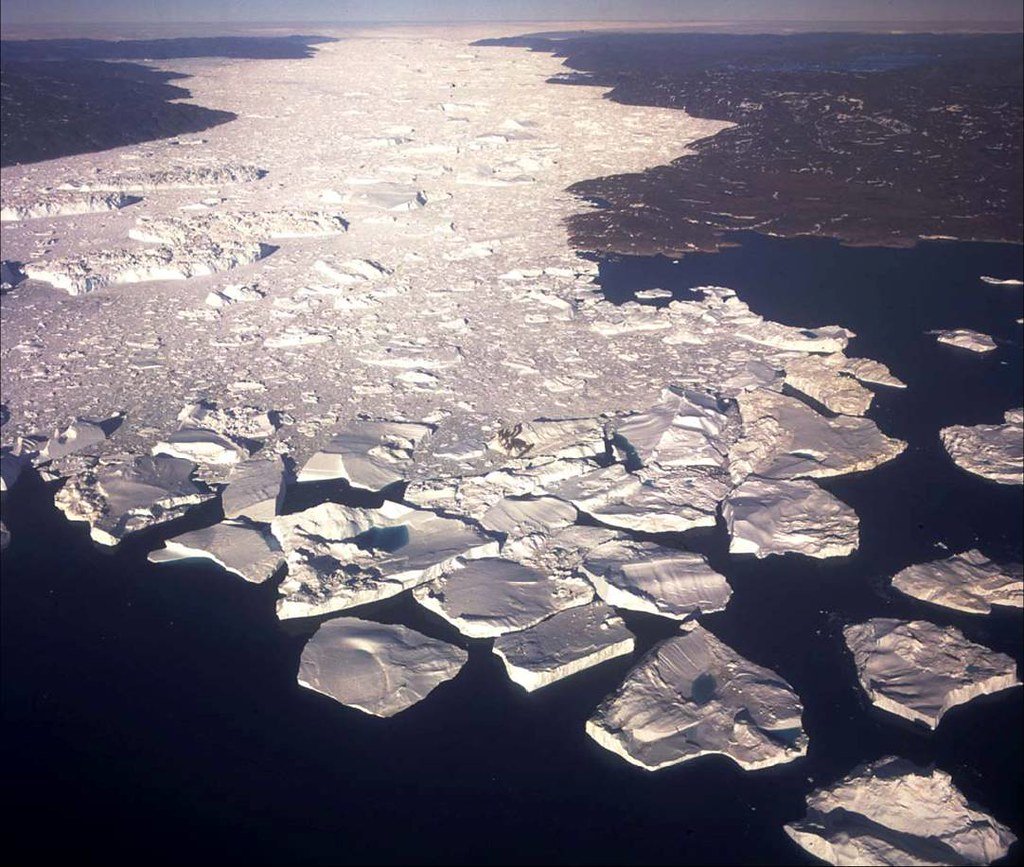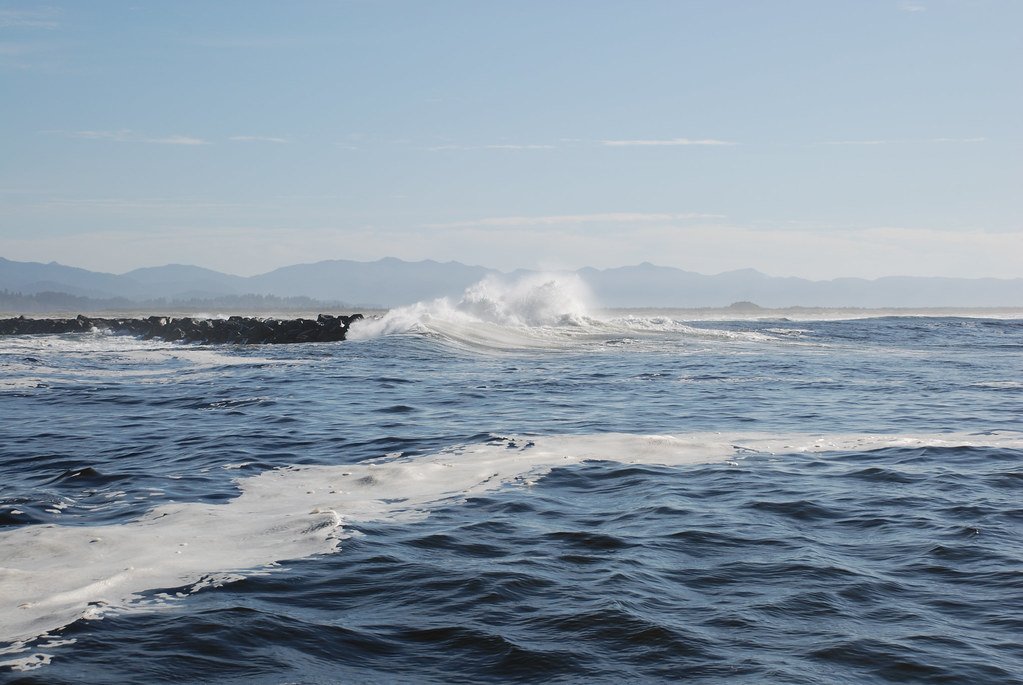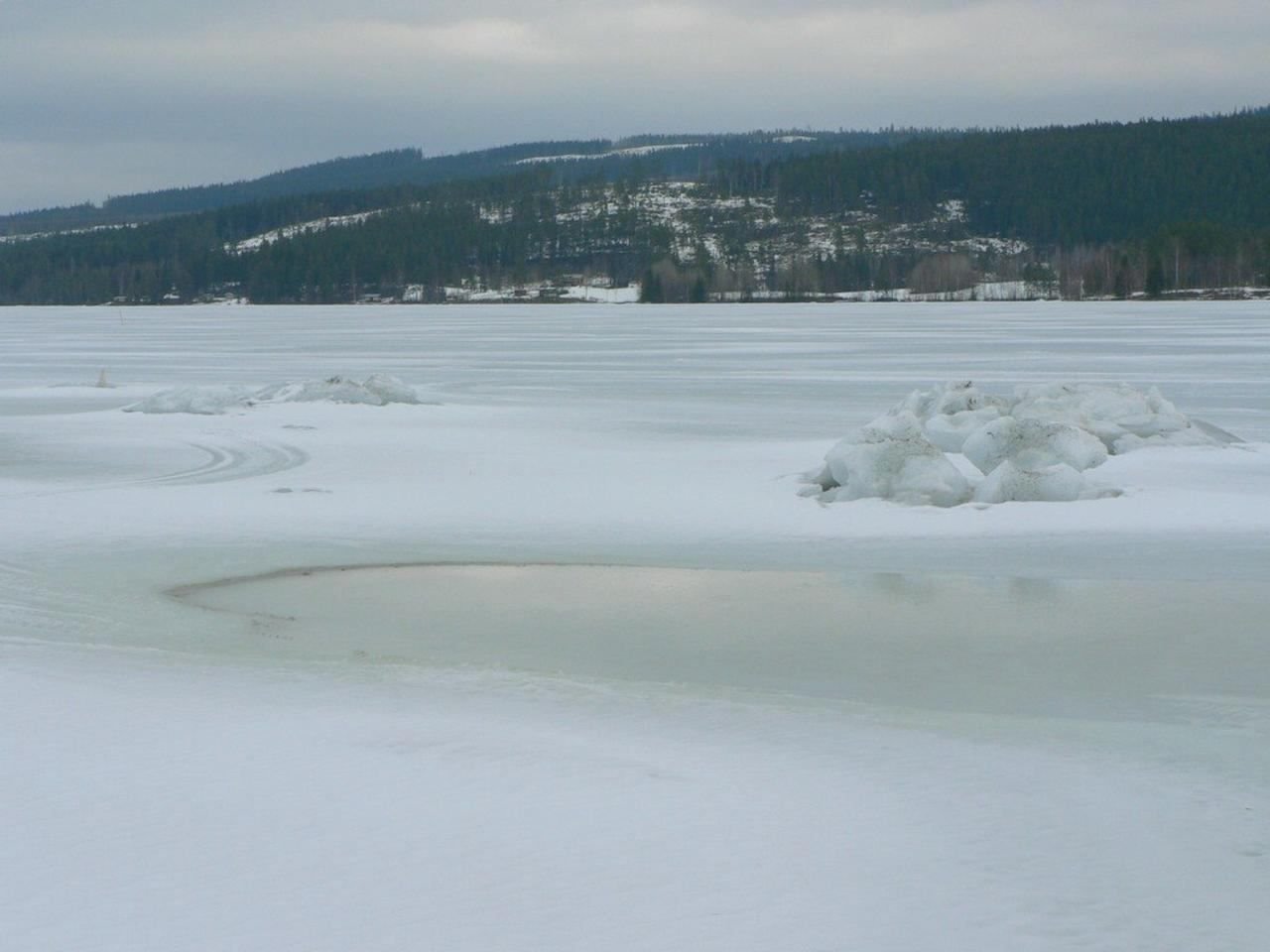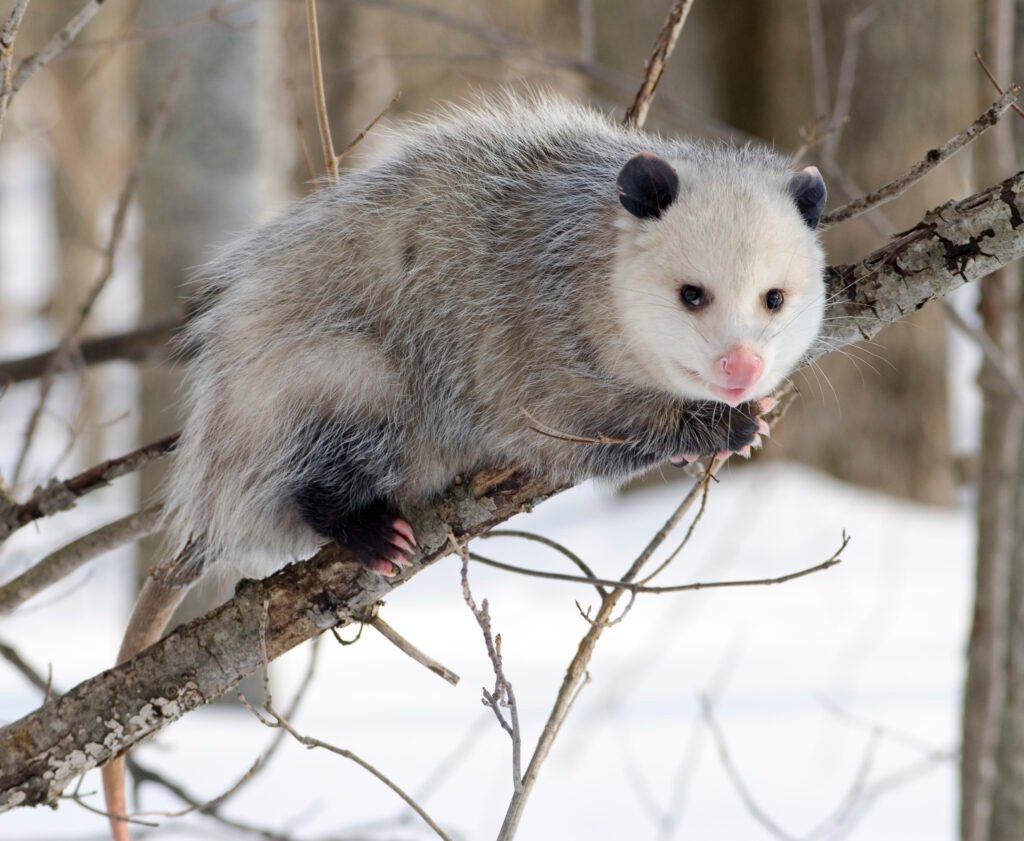The Arctic is changing faster than anywhere else on Earth, and what happens there doesn’t stay there. As temperatures rise at twice the global average, the frozen north is reaching critical thresholds that could reshape our planet’s entire climate system. These aren’t gradual changes we’re talking about – they’re dramatic shifts that happen suddenly, like dominos falling in sequence. When ice melts in the Arctic, it doesn’t just affect polar bears and indigenous communities; it triggers a cascade of changes that can alter weather patterns thousands of miles away, disrupt ocean currents that have flowed for millennia, and release greenhouse gases that have been locked away for thousands of years.
The Science Behind Arctic Tipping Points

Think of tipping points like a ball balanced on top of a hill – once it rolls over the edge, there’s no going back. In the Arctic, these tipping points represent moments when the climate system crosses a threshold and enters a new state that’s difficult or impossible to reverse. Scientists have identified several critical thresholds where small changes in temperature can trigger massive, self-reinforcing changes.
The physics behind these tipping points involves what researchers call positive feedback loops. When ice melts, it exposes darker surfaces that absorb more heat, which causes more melting, which exposes even more dark surfaces. This creates a runaway effect that accelerates far beyond what you’d expect from the original warming. It’s like pushing a snowball down a mountain – what starts small becomes unstoppable.
Albedo Effect: When White Turns to Dark

The albedo effect is perhaps the most visible and immediate feedback mechanism in the Arctic. Fresh snow and ice reflect up to 90% of incoming solar radiation back to space, acting like a giant mirror that keeps the planet cool. But when that white surface melts and reveals dark ocean water or land beneath, suddenly 90% of that same sunlight gets absorbed instead of reflected.
This dramatic shift from reflective to absorptive surfaces creates a powerful warming effect. Imagine the difference between wearing a white shirt and a black shirt on a sunny day – that’s essentially what’s happening to the Arctic on a massive scale. The darker surfaces heat up, warm the surrounding air, and accelerate the melting of nearby ice, creating an unstoppable cycle.
Recent satellite data shows that Arctic sea ice is declining by about 13% per decade, meaning less and less of that protective white surface remains each year. The ramifications extend far beyond the Arctic itself, affecting global weather patterns and ocean circulation systems.
Permafrost Thaw: The Carbon Time Bomb

Beneath the Arctic’s frozen surface lies a massive reservoir of carbon that’s been locked away for thousands of years. Permafrost – ground that stays frozen year-round – contains an estimated 1,700 billion tons of carbon, nearly twice as much as the entire atmosphere currently holds. When this permanently frozen ground begins to thaw, it releases methane and carbon dioxide into the atmosphere.
The release of these greenhouse gases from thawing permafrost creates another dangerous feedback loop. As temperatures rise, more permafrost melts, releasing more carbon, which causes more warming, which melts more permafrost. Scientists describe this as like opening a savings account that’s been accumulating interest for millennia and spending it all at once.
What makes this particularly concerning is that methane is roughly 25 times more potent than carbon dioxide as a greenhouse gas over a 100-year period. Some areas of Siberia are already experiencing dramatic permafrost thaw, with massive craters appearing as the ground collapses and releases stored gases.
Arctic Sea Ice: The Disappearing Shield

Arctic sea ice acts as a crucial shield that regulates global climate, but it’s disappearing at an alarming rate. The extent of sea ice varies seasonally, reaching its minimum in September and maximum in March, but both the minimum and maximum extents have been declining dramatically over the past four decades. Scientists estimate that Arctic sea ice is declining at a rate of about 13% per decade.
The loss of sea ice doesn’t just affect local ecosystems – it fundamentally alters the planet’s energy balance. With less ice to reflect sunlight, more heat gets absorbed by the dark ocean waters, warming them and making it even harder for ice to form in the following winter. This creates a self-perpetuating cycle where each year’s ice loss makes the next year’s loss more likely.
The psychological impact of watching satellite images of Arctic sea ice disappear year after year is profound. It’s like watching Earth’s air conditioning system gradually break down, and we’re powerless to stop it once certain thresholds are crossed.
Greenland Ice Sheet: The Sleeping Giant

The Greenland ice sheet contains enough water to raise global sea levels by about 24 feet, making it one of the most consequential tipping points in the Arctic. This massive ice sheet, which covers an area three times the size of Texas, is losing ice at an accelerating rate. Recent studies suggest that Greenland is now losing ice faster than it’s gaining it through snowfall, marking a fundamental shift in its mass balance.
What makes Greenland particularly vulnerable is its unique geography and topography. Much of the ice sheet sits in bowl-shaped depressions below sea level, making it susceptible to warming from both above and below. As surface temperatures rise, meltwater can penetrate deep into the ice, lubricating its movement toward the ocean and accelerating its disintegration.
The tipping point for Greenland’s ice sheet is estimated to occur when global temperatures rise between 1.5 and 2 degrees Celsius above pre-industrial levels. Once this threshold is crossed, the ice sheet could be committed to complete melting over the course of thousands of years, regardless of future emissions reductions.
The Polar Vortex Connection

The polar vortex – that swirling mass of cold air that normally stays confined to the Arctic – is becoming increasingly unstable as Arctic warming accelerates. This instability is directly linked to the loss of sea ice and the resulting changes in atmospheric pressure patterns. When the polar vortex weakens or becomes distorted, it can send frigid Arctic air streaming southward into lower latitudes.
This phenomenon explains why some regions can experience record-breaking cold snaps even as the Arctic warms dramatically. It’s counterintuitive but scientifically sound – a warming Arctic can actually lead to more extreme cold weather in places like Texas, Europe, and Asia. The polar vortex acts like a refrigerator door, and Arctic warming is essentially leaving that door wide open.
The implications for agriculture, energy systems, and human society are enormous. When the polar vortex becomes unstable, it can trigger extreme weather events that strain infrastructure and disrupt food production across multiple continents.
Ocean Circulation Disruption

The Atlantic Meridional Overturning Circulation (AMOC) – often called the “global conveyor belt” – is a massive system of ocean currents that transports warm water northward and cold water southward. This circulation system is powered partly by the formation of dense, cold water in the Arctic, but as the Arctic warms and freshwater from melting ice dilutes the ocean, this system is weakening.
A collapse of the AMOC would have catastrophic consequences for global climate. Europe could cool dramatically despite global warming, tropical rainfall patterns could shift drastically, and marine ecosystems could collapse. The system has been relatively stable for thousands of years, but recent measurements suggest it’s weakening at an unprecedented rate.
Scientists compare the AMOC to a massive engine that drives weather patterns across the globe. When that engine starts sputtering, the effects ripple outward in ways that are difficult to predict but certain to be significant.
Arctic Amplification: The Feedback Loop

Arctic amplification refers to the phenomenon where the Arctic warms much faster than the rest of the planet – currently about twice as fast as the global average. This amplification occurs because of several interconnected feedback mechanisms that reinforce each other in a continuous cycle. The loss of reflective ice surfaces, the darkening of the landscape, and the release of stored carbon all contribute to this accelerated warming.
The process is remarkably similar to compound interest in finance – small initial changes grow exponentially over time. What starts as a modest temperature increase becomes a dramatic transformation as each feedback mechanism amplifies the others. This amplification means that even small changes in global temperature can have outsized effects in the Arctic.
The speed of Arctic amplification has surprised even climate scientists. Temperature records in the Arctic are being broken regularly, with some areas experiencing warming of 5 degrees Celsius or more compared to historical averages.
Methane Hydrate Release

Beneath the Arctic Ocean floor lies another carbon time bomb: methane hydrates, also known as “fire ice.” These crystalline structures trap methane molecules in ice-like cages, but they’re stable only under specific conditions of low temperature and high pressure. As Arctic waters warm, these hydrates can become unstable and release their methane directly into the atmosphere.
The potential release of methane from hydrates represents one of the most feared tipping points in climate science. Methane is an extremely potent greenhouse gas, and the sudden release of large quantities could trigger rapid global warming. Some scientists have dubbed this the “clathrate gun hypothesis” – the idea that methane hydrates could act like a loaded gun ready to fire.
While the exact timeline and scale of potential methane hydrate release remain uncertain, the mere possibility keeps climate scientists awake at night. The deposits are vast, containing more carbon than all other fossil fuel reserves combined.
Wildlife and Ecosystem Tipping Points

Arctic ecosystems are experiencing their own tipping points as warming temperatures disrupt food webs and habitat connections that have existed for millennia. Polar bears, often considered the poster species for climate change, are struggling to adapt as their sea ice hunting grounds disappear. But they’re just one part of a complex web of species facing unprecedented challenges.
The timing of biological events – like when flowers bloom, when insects emerge, or when birds migrate – is becoming increasingly mismatched. This phenomenon, called phenological mismatch, can cause entire food webs to collapse. It’s like showing up to a dinner party and finding out everyone else came last week.
Arctic char, caribou, and countless other species are finding their traditional habitats transformed beyond recognition. Some species may adapt or migrate, but others face extinction as their specialized Arctic niches disappear entirely.
The Jet Stream Disruption

The jet stream – those fast-moving rivers of air that circle the globe at high altitudes – depends on temperature differences between the Arctic and lower latitudes to maintain its strength and stability. As the Arctic warms faster than other regions, this temperature gradient weakens, causing the jet stream to become more meandering and unstable.
When the jet stream becomes “wavy” instead of flowing in a relatively straight line, it can trap weather patterns in place for extended periods. This leads to more persistent extreme weather events: longer heat waves, more prolonged droughts, and more persistent flooding events. The jet stream essentially becomes like a river with too little flow – it starts to meander and create oxbow lakes of weather.
The implications for agriculture and human society are profound. When weather patterns get stuck in place, they can create the conditions for unprecedented disasters that strain our adaptive capacity.
Ice Sheet Dynamics: The Point of No Return

Ice sheets don’t just melt uniformly like an ice cube in a glass – they have complex internal dynamics that can lead to sudden, dramatic changes. As surface melting increases, meltwater can penetrate deep into the ice through crevasses and moulins (vertical shafts), reaching the bedrock below. This water acts as a lubricant, allowing massive sections of ice to slide more rapidly toward the ocean.
The concept of marine ice sheet instability is particularly concerning. When the grounding line – the point where ice meets the ocean – retreats into deeper water, it can trigger a runaway collapse. This process is already underway in parts of West Antarctica and could potentially affect Greenland as well.
Once these ice sheet instabilities are triggered, they can continue for centuries or millennia, even if atmospheric temperatures stabilize. It’s like pushing a boulder off a cliff – once it starts rolling, gravity takes over regardless of whether you keep pushing.
Coastal Implications: Rising Seas

The melting of Arctic ice has direct implications for coastal communities worldwide through sea level rise. Unlike sea ice, which is already floating and doesn’t contribute to sea level rise when it melts, the massive ice sheets of Greenland and the glaciers of the Arctic islands represent stored water that will raise global sea levels as they melt.
What makes sea level rise particularly challenging is that it’s not uniform across the globe. Some areas experience much greater increases than others due to factors like ocean currents, gravitational effects, and local land subsidence. Coastal megacities from Miami to Mumbai face existential threats as sea levels continue to rise.
The psychological impact of watching coastal communities slowly disappear beneath the waves is profound. These aren’t abstract future scenarios – they’re happening now, displacing real people and destroying real communities.
Global Weather Pattern Disruption

The Arctic plays a crucial role in driving global weather patterns, and its rapid transformation is disrupting weather systems far from the polar regions. The monsoon systems that billions of people depend on for agriculture are shifting as Arctic changes alter atmospheric circulation patterns. These shifts can mean the difference between life and death for farmers in Asia and Africa.
Hurricane and typhoon patterns are also changing as Arctic warming affects the temperature gradients that drive these storm systems. Some regions may see more intense storms, while others may experience unprecedented drought as traditional weather patterns shift.
The interconnectedness of global weather systems means that what happens in the Arctic doesn’t stay in the Arctic. It’s like tuning a guitar – change the tension on one string, and all the others are affected.
Economic Tipping Points

The economic implications of Arctic tipping points are staggering and often underestimated. The costs of adapting to sea level rise alone could reach trillions of dollars globally. Insurance companies are already pulling out of high-risk coastal areas, and real estate values in vulnerable locations are beginning to reflect climate reality.
Agriculture faces massive disruption as weather patterns shift and extreme events become more common. The Arctic warming isn’t just an environmental issue – it’s an economic transformation that will reshape global markets and trade patterns. Food security, energy systems, and supply chains all face unprecedented challenges.
The concept of “stranded assets” – investments that become worthless due to climate change – is becoming increasingly relevant. Coastal infrastructure, agricultural land, and even entire cities may become economically unviable as Arctic tipping points are crossed.
Technological Monitoring and Early Warning

Scientists are deploying increasingly sophisticated technology to monitor Arctic tipping points and provide early warnings of dramatic changes. Satellite systems can detect changes in ice thickness, temperature, and even the subtle signals that indicate approaching tipping points. These monitoring systems are like the canaries in the coal mine for global climate stability.
Artificial intelligence and machine learning are being used to analyze vast amounts of data from weather stations, ocean buoys, and satellite observations to identify patterns that might indicate approaching tipping points. The goal is to provide enough warning to allow for adaptation and mitigation efforts.
However, the challenge lies in translating complex scientific data into actionable information for policymakers and the public. The time scales involved – from immediate changes to consequences that play out over decades – make it difficult to convey the urgency of the situation.
Indigenous Knowledge and Observations

Indigenous communities in the Arctic have been observing and adapting to environmental changes for thousands of years, and their knowledge provides crucial insights into current transformations. Elders describe changes in ice patterns, wildlife behavior, and weather phenomena that complement scientific observations with deep, place-based understanding.
The combination of traditional ecological knowledge and modern science creates a more complete picture of Arctic changes. Indigenous observers often notice subtle changes years before they show up in scientific datasets, providing early warnings of approaching tipping points.
The voices of Arctic indigenous peoples also remind us that these aren’t just abstract scientific phenomena – they’re disruptions to ways of life that have existed for millennia. Their observations carry both scientific value and moral weight in understanding the full implications of Arctic change.
The Irreversibility Factor

Perhaps the most sobering aspect of Arctic tipping points is their potential irreversibility on human timescales. Once certain thresholds are crossed, the changes they trigger can continue for centuries or millennia, regardless of future human actions. This irreversibility transforms climate change from a problem we can solve to a new reality we must adapt to.
The concept of committed warming – the idea that we’re already locked into certain amounts of future warming due to past emissions – becomes even more significant when tipping points are considered. Some changes may be unstoppable even if we immediately ceased all greenhouse gas emissions.
This irreversibility doesn’t mean we should give up – it means we need to act even more urgently to prevent additional tipping points from being crossed. Every fraction of a degree of warming matters when we’re dealing with systems that can flip suddenly and permanently.
Conclusion: The Domino Effect

Arctic tipping points represent far more than regional environmental changes – they’re the trigger mechanisms for a fundamental transformation of Earth’s climate system. As the Arctic continues to warm at twice the global average, we’re witnessing the early stages of changes that will reshape weather patterns, ocean circulation, and ecosystem dynamics worldwide.
The interconnected nature of these tipping points means that crossing one makes others more likely, creating a cascade effect that could accelerate beyond our ability to adapt. From the albedo effect to permafrost thaw, from ice sheet collapse to ocean circulation disruption, each tipping point amplifies the others in a complex web of feedback loops.
The window for preventing some of these tipping points is rapidly closing, but understanding them gives us the knowledge needed to prepare for the changes ahead. The question isn’t whether Arctic tipping points will continue to be crossed – it’s how many we can still prevent and how well we can adapt to those we cannot. What will it take for humanity to truly grasp the magnitude of what we’re witnessing in the Arctic?



